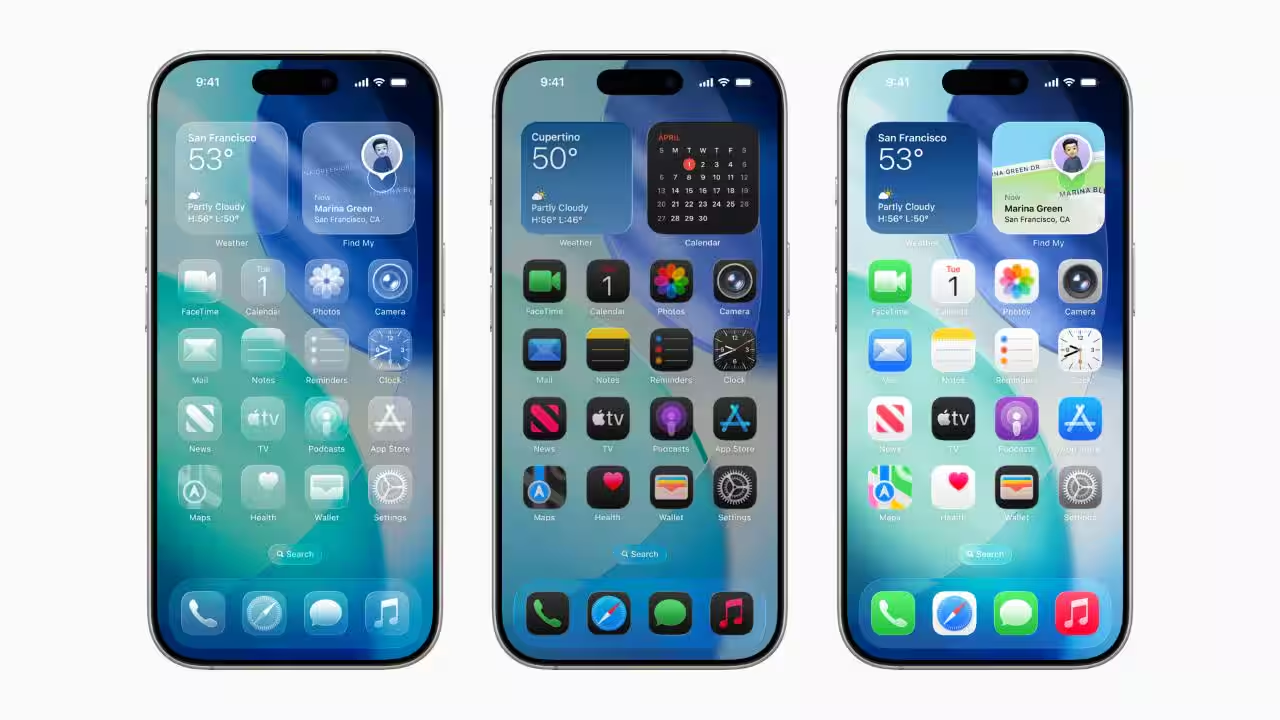Apple has once again blurred the line between tablets and laptops with the official unveiling of iPadOS 26. The update, announced at Apple’s Worldwide Developers Conference (WWDC) 2025, brings a transformative suite of features that turn the iPad into a near-complete MacBook alternative — especially for professionals, students, and creators seeking power, flexibility, and portability.
While Apple has long pitched the iPad as a productivity tool, previous versions of iPadOS were often seen as falling short of offering the full desktop-like experience users expected. iPadOS 26 changes that perception significantly. With native support for external displays, enhanced windowed multitasking, full terminal access, pro app enhancements, and a redesigned file system, this update pushes the iPad closer to becoming a full-fledged laptop replacement.
This press release provides a detailed, easy-to-understand overview of iPadOS 26, its headline features, the strategic shift it represents for Apple, and what it means for users, developers, and the broader tech ecosystem.
iPadOS 26: An Overview
Apple’s iPadOS 26 is built upon years of incremental evolution but introduces some of the boldest changes yet. It not only expands what the iPad can do but redefines how people interact with it across creative, professional, and technical domains.
Some of the core enhancements include:
- A new “Stage Manager Pro” with resizable, overlapping windows and improved multi-display management
- Full external monitor support with distinct workspace allocation
- Command Line Terminal support natively — a first for iPad
- Expanded Pro App Ecosystem including Final Cut Pro 2 and Logic Pro X updates
- Deeper integration with macOS-style file systems, file permissions, and user profiles
- System-wide AI assistant integration with contextual awareness across apps
The changes transform the iPad from a supplementary device into a primary computing environment.
Stage Manager Pro: True Windowed Multitasking
The standout productivity feature is Stage Manager Pro, an enhanced version of the multitasking interface Apple debuted in iPadOS 16. Unlike previous iterations, Stage Manager Pro introduces full resizable windows, layered multitasking, and true drag-and-drop support between apps.
Users can now:
- Run up to eight concurrent apps in overlapping windows
- Resize windows freely (not limited to predefined size ratios)
- Save custom workspaces for different tasks
- Use keyboard and trackpad shortcuts similar to macOS
This brings the iPad much closer to the experience users get on MacBooks and other laptops, finally delivering the fluid multitasking power that professionals have long demanded.
Full External Display Support: Dual-Screen Power
With iPadOS 26, external monitor support is no longer limited to mirroring. Instead, users can extend their iPad display to a second screen — with independent app instances on each.
This means users can:
- Edit video on one screen while monitoring audio on the other
- Use one screen for coding and another for previewing
- Run browser-based research while taking notes separately
This feature transforms the iPad into a true desktop-class workstation when docked, particularly when paired with Apple’s Magic Keyboard or third-party keyboard cases.
Native Terminal Support: A First for iPads
In a landmark shift for developers, Apple has introduced Terminal.app for iPadOS 26. It allows command-line access to system files, scripting environments, and development tools.
Developers can now:
- Use tools like git, python, node, and brew directly on iPads
- Write, test, and deploy code from the iPad
- Automate workflows with shell scripts
- Access secure remote servers through SSH
Terminal support signals Apple’s intent to make the iPad more appealing to tech-savvy power users, finally granting access to the Unix-based power beneath iPadOS’s graphical interface.
Creative Apps Get Serious: Final Cut and Logic Pro Updates
Apple has also significantly upgraded Final Cut Pro for iPad and Logic Pro X, aligning them more closely with their macOS versions. Both apps now offer:
- Full plug-in support
- Multi-track editing with external storage integration
- Background rendering
- AI-powered features like Smart Cut and Audio Cleanup
- Advanced keyboard shortcuts and Apple Pencil tools
For videographers, musicians, and content creators, the iPad is no longer a secondary editing device — it’s now a production-grade tool.
File System Overhaul and User Profiles
Another critical upgrade in iPadOS 26 is its revamped file system. While iPadOS previously offered a simplified version of the Finder, version 26 introduces:
- Expanded folder hierarchy support
- File and folder permissions management
- User profiles, allowing multiple users to securely share the same device
- App sandboxing updates that mimic macOS behavior
This puts iPads on par with entry-level MacBooks for file handling — particularly useful for shared work environments, classrooms, or families.
System-Wide AI Integration: Intelligent Assistance Everywhere

Apple has also introduced a system-wide AI assistant named Apple Intelligence, debuting alongside iPadOS 26. Unlike Siri, Apple Intelligence works contextually across apps, windows, and user behavior.
Examples include:
- Summarizing emails and notes
- Recommending apps or tools based on current tasks
- Auto-filing documents based on naming conventions
- Extracting data from images, PDFs, and emails on the fly
The assistant appears as a persistent mini-window and can be controlled via voice, Apple Pencil gestures, or keyboard shortcuts.
Importantly, all AI processing happens on-device, ensuring privacy — a key part of Apple’s value proposition.
iPad vs. MacBook: Is the iPad Ready to Replace Your Laptop?
With these features in place, the age-old question re-emerges: Can the iPad replace your MacBook?
In many cases, yes.
Who will benefit most from iPadOS 26:
- Creative professionals who want touch and pencil input for precision work
- Students who need lightweight, versatile computing on the go
- Remote workers using multitasking, video conferencing, and AI-enhanced productivity tools
- Developers who now have terminal access and external display flexibility
- Enterprise teams deploying secure user profiles and pro apps
However, some limitations remain for niche users. Heavy-duty 3D rendering, certain pro-grade IDEs, and batch data processing might still require traditional laptops or desktops. But for 90% of users, iPadOS 26 makes the iPad an appealing — and often superior — alternative.
Strategic Implications for Apple
iPadOS 26 represents a strategic pivot for Apple. For years, critics questioned why Apple didn’t simply merge macOS and iPadOS. With this update, Apple has made it clear: they want users to choose the device that fits their lifestyle — not lock them into one model.
This dual-platform philosophy means:
- iPads now offer touch-first computing with laptop-grade power
- MacBooks continue to deliver classic laptop workflows
- Both ecosystems benefit from shared apps, cloud sync, and AI
It also positions Apple against competitors like Microsoft’s Surface Pro line, which has long pitched tablet-laptop hybridization. With iPadOS 26, Apple finally meets — and arguably surpasses — that promise.
Developer Ecosystem: New Tools, New Opportunities
Developers are also gaining access to a new iPadOS SDK that includes tools for creating AI-aware, multitasking-friendly, and resizable-window-compatible apps.
Apps built for iPadOS 26 can:
- Run in multiple windowed states
- Leverage Apple Intelligence APIs
- Utilize terminal-based back-end processes
- Integrate with system-wide services and file management
This could result in a wave of new productivity tools, particularly in areas like automation, remote work, and education.
Public and Critical Reception
Initial developer beta feedback has been overwhelmingly positive. Tech reviewers are calling iPadOS 26 the most “ambitious and freeing” update yet, while forums and social media are flooded with praise from iPad power users.
Critics do note that not all iPads will support the full feature set. Stage Manager Pro, Terminal, and some AI features are limited to M2 or later chips, which may leave users of older devices feeling left behind.
However, for anyone with recent hardware, iPadOS 26 offers a dramatic leap forward.
Compatibility and Release
iPadOS 26 will be compatible with the following models:
- iPad Pro (M1 and later)
- iPad Air (M1 and later)
- iPad (10th generation and later)
The developer beta is available now, with a public beta arriving in July and full rollout expected in September 2025.
Conclusion: The iPad Just Grew Up
iPadOS 26 doesn’t just make the iPad better — it changes what it is. No longer relegated to being a lightweight companion, the iPad is now a robust productivity machine capable of replacing laptops for a wide range of users.
For Apple, this is more than a software update — it’s a bet on the future of personal computing.
For users, it’s the freedom to choose a device that blends portability, power, and purpose like never before.
For more updates and analysis on the latest in Apple, AI, and future tech, visit TechThrilled.
